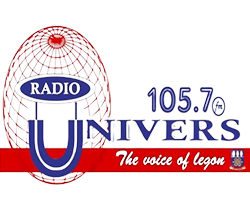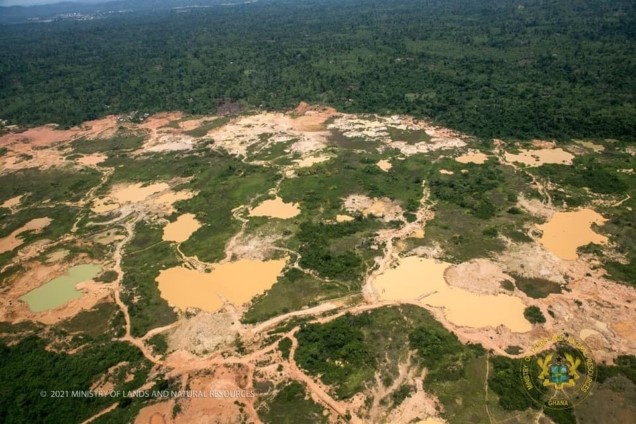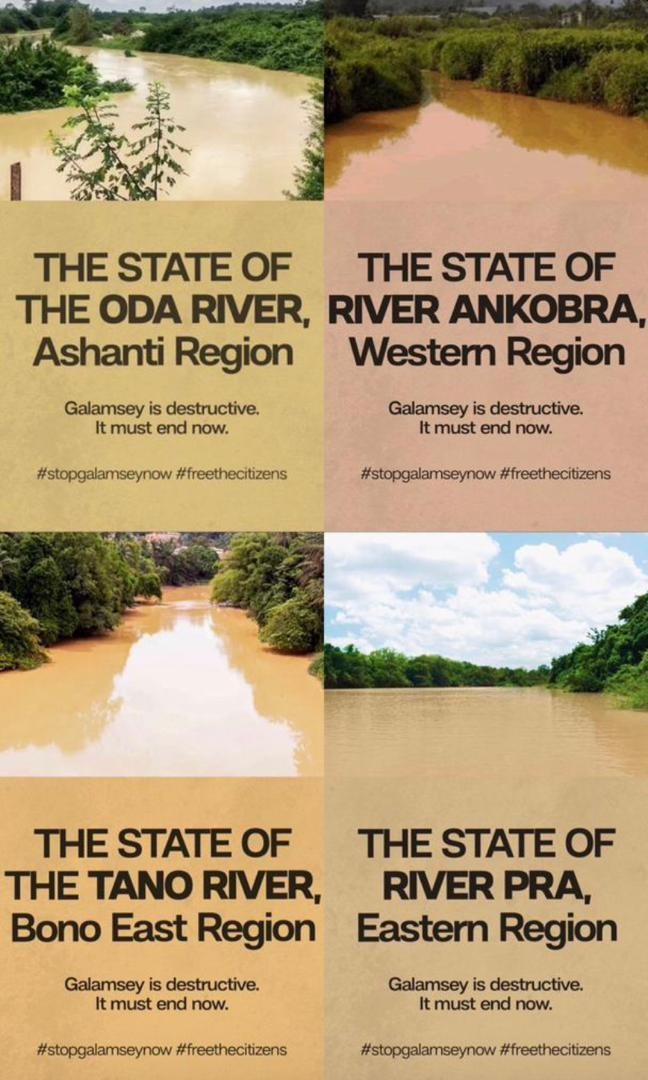Galamsey, derived from the phrase “gather them and sell”. It refers to illegal small-scale gold mining activities, which have become widespread in various regions of Ghana.
Galamsey, has evolved into more than an environmental or economic issue in Ghana. It has become a full-blown public health emergency with far-reaching impacts on local communities. The unchecked and widespread activities of galamsey not only degrade the environment but also jeopardize the health of thousands of Ghanaians. The destruction of ecosystems by galamsey has created conditions ripe for a public health crisis. Illegal miners use dangerous chemicals, including mercury and cyanide for gold extraction, which seep into the environment.
The contamination of rivers and water bodies due to galamsey is one of the clearest examples of how illegal mining poses a public health emergency. Thousands of people rely on these rivers for drinking, cooking, and agriculture, but toxic chemicals like mercury, cyanide, and arsenic have infiltrated water sources. Major rivers like the Pra, Ankobra, Oti, Offin and Birim have all been contaminated. The Ghana Water Company Limited warned of severe water scarcity if galamsey is not curtailed. This contamination heightens the risk of waterborne diseases. Given the reliance on these rivers for basic needs, these diseases spread rapidly, especially among vulnerable populations such as children, the elderly, and pregnant women.
Airborne particles from mining operations, including dust and toxic fumes from chemicals, pollute the air in mining regions. Prolonged exposure to poor air quality leads to respiratory diseases, including asthma, bronchitis, and even long-term conditions such as chronic obstructive pulmonary disease (COPD). Communities living near galamsey sites often report higher instances of respiratory illnesses.
Galamsey activities also contribute to widespread deforestation, stripping the land of vegetation that is crucial for soil stability and water absorption. And also contributes to climate change. Without trees, these areas become more susceptible to flooding, further compounding public health risks. Flooded areas often become breeding grounds for mosquitoes, leading to spikes in malaria transmission, another significant health emergency.
One of the most dangerous aspects of galamsey is the use of mercury and cyanide in gold extraction. These toxic chemicals pose acute and long-term health risks not only to miners but also to communities downstream of mining sites.
Mercury, a potent neurotoxin, is used extensively in gold mining to amalgamate gold. Miners, often without protective equipment, come into direct contact with mercury, leading to acute health issues such as tremors, memory loss, and muscle weakness. In communities exposed to mercury over the long term, chronic health problems including neurological disorders, developmental delays in children, and increased cancer risks have been documented. Mercury also bioaccumulates in the food chain, contaminating fish that serve as a primary food source, further exacerbating the public health crisis.
Cyanide, another toxic chemical used in gold extraction, can leach into the water system and soil. Even small amounts of cyanide can cause poisoning, with symptoms including dizziness, respiratory failure, and in severe cases, death. Continuous exposure to low levels of cyanide in water has been linked to chronic illnesses, including nerve damage, heart problems, kidney damage, vision and hearing loss, developmental delays and birth defects in children.
Illegal mining exposes workers and surrounding communities to heavy metals like lead and arsenic present in the soil. Lead poisoning can cause developmental delays, learning difficulties, and neurological problems, particularly in children. Arsenic exposure can lead to skin lesions, cancers (skin, lung, bladder), and cardiovascular diseases. There has also been reports of skin rashes, dermatitis, and sores Chemical burns from direct contact with mercury or cyanide Chronic skin infections due to poor hygiene and contaminated water.
Galamsey activities lead to soil degradation, loss of agricultural land, and contamination of food sources. There has been increase cases of malnutrition due to food scarcity and lack of access to safe, nutritious food leading to vitamin deficiencies that can weaken immune systems and impair development. This may cause stunted growth in children and increased vulnerability to infections.
Physical injuries (broken bones, lacerations, and amputations) due to accidents like tunnel collapses or machinery malfunctions. Long-term musculoskeletal problems from heavy labor. These heavy metals can also cause mental health issues, including post-traumatic stress disorder (PTSD), depression, and anxiety due to dangerous and unstable working conditions.
Recent news shows that chronic exposure to mercury and other toxic chemicals can affect reproductive health, cause miscarriages and stillbirths, low birth weight, birth defects, developmental delays in children and infertility in both men and women.
The Pharmaceutical manufacturers of Ghana explained that pharmaceutical company depend heavily on water in their production processes, including for cleaning, cooling, and as a solvent for chemical reactions. The contamination of water sources due to galamsey poses a severe threat to drug manufacturing. Research shows that heavy metals can alter the stability and efficacy of active pharmaceutical ingredients (APIs), resulting in lower-potency drugs.
Ingesting drugs tainted with heavy metals can also pose serious health risks, such as organ toxicity, long-term neurological effects, and even carcinogenesis. This adds layer of concern, as even properly formulated drugs can become toxic if they are exposed to contaminated water or environments during manufacturing.
Galamsey’s impact on public health extends beyond individual health risks. It overwhelms local health infrastructures in affected areas, leading to delays in care, misdiagnoses, and a lack of resources to treat the health problems that emerge from mining-related activities.
Local clinics and hospitals in galamsey hotspots are ill-equipped to deal with the volume and complexity of mining-related illnesses. Health facilities in these regions often lack the resources to treat waterborne diseases and malaria, let alone manage mercury and cyanide poisoning and respiratory conditions exacerbated by illegal mining activities.
Many health workers in affected areas may not be adequately trained to identify and treat illnesses stemming from toxic exposure. Additionally, the lack of adequate public health monitoring systems makes it difficult to track the full scale of health impacts, leading to underreporting of cases and inadequate responses. More importantly Ghana’s health care system heavily depends on international donors hence, escalation in diseases may put excess demand on these donors to fund our self- created problems.
Children involved in galamsey face severe public health risks, with long-term consequences for their physical and mental well-being. These children are often exposed to the same hazardous chemicals as adults, but their developing bodies are even more vulnerable to toxic exposure. Children exposed to mercury and other toxic substances often suffer from stunted growth and cognitive impairments. Mercury exposure in particular can lead to delayed mental development, learning disabilities, and behavioral problems. This creates a cycle of poverty, where children are not only physically and mentally stunted but are also deprived of opportunities for education and future employment. Children working in galamsey operations often perform dangerous tasks, such as digging tunnels or handling toxic chemicals. These hazardous conditions frequently result in injuries, and without access to proper medical care, many children suffer long-term physical disabilities or even die from preventable accidents.
One major impact of Galamsey activities is the destruction of water sources and farmlands, leading to a public health emergency driven by water scarcity and food insecurity. As water bodies are contaminated with chemicals, access to clean drinking water has diminished, leading to water shortages in many regions. This increases the incidence of waterborne diseases and forces communities to rely on expensive or distant water sources, further exacerbating their vulnerability. Illegal mining has destroyed fertile agricultural lands, leaving communities unable to farm.
With fewer crops available and contamination affecting the quality of produce, malnutrition and food shortages have become major public health concerns, especially for children and the elderly.
According to the Ghana Mining Repository, from 1988-2016, Ghana has 96 mining licenses; 2017 till date, Ghana has issued 1503 licenses. Despite the huge numbers of communities affected by these mining activities more licensees have been issued to miners. Report from a mining consultant, Dr. Solomon Owusu shows that fourteen (14) regions out of sixteen (16) regions in Ghana have been affected by mining.
- Ashanti Region:Obuasi, Adansi Akrokerri, Adansi Akrofuom, Amansie, Manso Nkwanta, Manso Adubia, Agroyesum, Esaase Bontefufuom, Ntobroso, Diewuoso, Aduaneyede, Gyimiso, Mampamhwe, Patakro, Fomena, etc.
- Western Region: Tarkwa, Prestea, Bogoso, Asankragua, Wassa Akropong, Wassa Japa, Mpohor, Damang, Nkroful, Teleku Bukazo, Anhwiaa, Axim, Ewereko, Daboase, Atieku-Akyempim, etc.
- Western North Region: Aowin, Bibiani, Enchi, Sefwi Bekwai, Sefwi Wiawso, Sefwi Akontombra, Suaman, etc.
- Eastern Region: Adeiso, Akwatia, Anyinam, Akyem Asunafo, Akwaboaso, Akroful, Awerenare, Kwabeng, Kyebi, Kibi, Oda, Ofoase-Ayirebi, Osino, New Abirem, Nkatieso, etc.
- Central Region: Dunkwa, Ayanfuri, Assin Asaman, Assin Fosu, etc.
- Ahafo Region: Duayaw Nkwanta, Kenyasi, Ntotroso, Yamfo, etc.
- Bono Region: Dormaa, Kyeremasu, Wamfie, etc.
- Bono East Region: Donkoro Nkwanta, Kintampo, Nkoranza, etc.
- Savannah Region: Banada Nkwanta, Dollar Power (Border town), Ntereso, etc.
- Upper West Region: Lawra, Cherikpong, Tanchara, Sissala East, etc.
- Upper East Region: Talensi, Bolga, etc.
- North East Region: Nanguma, Mamprugu, etc.
- Northern Region: Bole, Bamboi, Dakurpe, Tinga, etc
- Oti Region: Worawora (Alluvial mining)
There is A Need for Immediate Government Action.
The galamsey situation requires immediate and coordinated government intervention to prevent further public health deterioration. Galamsey has not only disrupted the natural environment but has also created an ongoing public health crisis that needs immediate attention.
The Ghanaian government must strengthen enforcement of laws banning illegal mining and work to rehabilitate damaged ecosystems. Although initiatives such as “Operation Vanguard” have attempted to curb galamsey, their effectiveness has been limited due to corruption, limited resources, and lack of sustained commitment. The government, in collaboration with international organizations, must launch emergency health interventions in galamsey-affected areas. This includes screening for heavy metal poisoning, providing medical treatment for affected individuals, and establishing long-term health monitoring in affected communities.
In conclusion, the diseases associated with galamsey activities present severe public health challenges. The combination of chemical exposure, environmental degradation, unsafe water, food shortage and poor air quality places communities at high risk of a wide range of health conditions. There should be immediate actions to stop galamsey now, if not in few years to come we will be importing all our foods and water.
Author; Ms. Character Dzorgbenyui Forfoe ( Epidemiologist)






